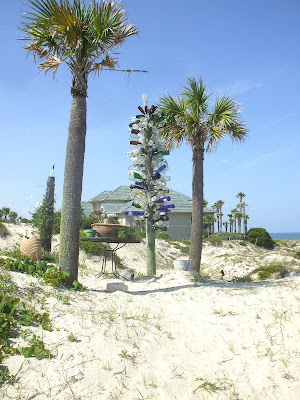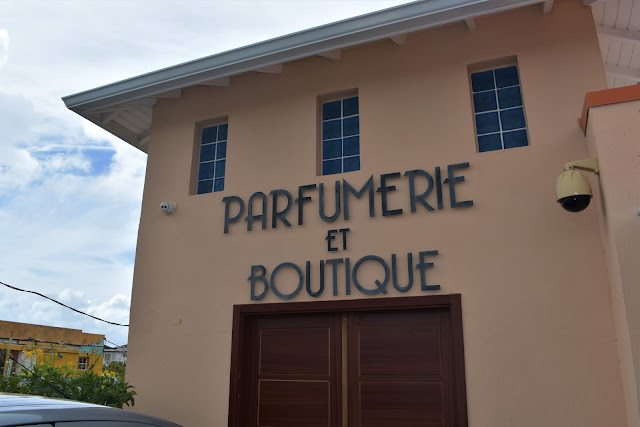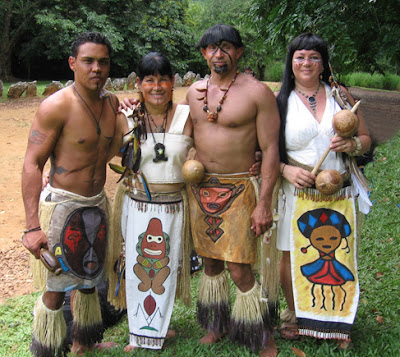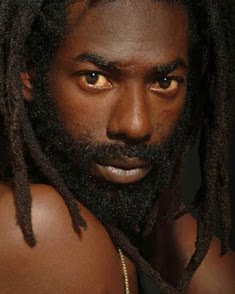American Beach
Located on northeast Florida's Amelia Island, American Beach is a dreamy stretch of 200 acres that was established as a beach resort for African Americans in 1933, during the Jim Crow era when most beaches were segregated. American Beach remains an undeveloped historical gem, brimming with cultural history. The very first thing that caught my eye on the beach was the bottle tree above, glistening between two palms.
Bottle trees are a hallmark of Southern gardens but the tradition reaches back further, centuries ago in the Central African nation of the Congo. Bottles were slipped onto tree branches to catch spirits trying to enter a house. This tree shows the customary sea green and "haint blue" bottles that whistle like captured ghosts when the wind blows.
The other thing that immediately grabbed my attention was this swirling 60 feet sand dune called Nana, a West African term for great mother. Nana is the tallest sand dune in the state of Florida and is protected as the state's last undeveloped dune system.
Unlike most resort towns, American Beach displays a charming, uncommercialized impression. The pearly-sand beach is pristine and quiet and the streets are unpaved and lined with palm trees, flowers and wild garlic, pictured above.
Historical houses that in American Beach's heyday, hosted luminaries like Zora Neale Huston, Joe Louis, Ossie Davis and Mary McLeod Bethune are another hallmark. This notable house above is constructed of coquina, a substance made from the crushed shells on the beach mixed with concrete.
Newer houses like this one, built in 2004 and called Turtle Dreams because of the turtle theme in every room, are being constructed as weekend getaways for families who continue American Beach's legacy as as a welcoming beach community steeped in culture and tradition.









Comments
Greetings from London.
Jean-Luc, it really is.
Have a nice day!
Andy, I'm glad you learned something from my post. Thanks for dropping by!